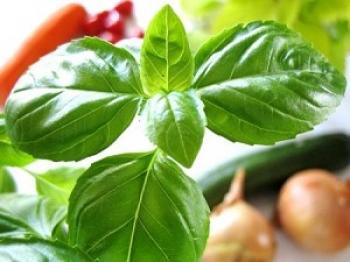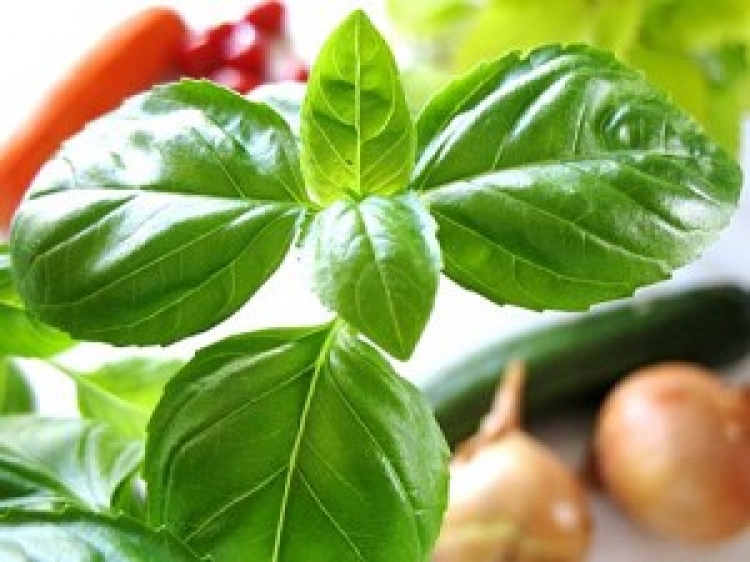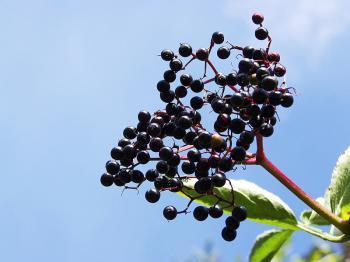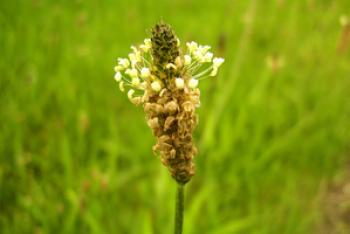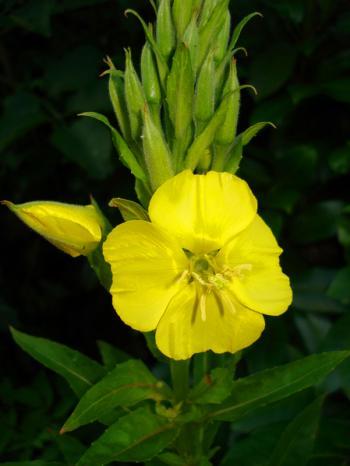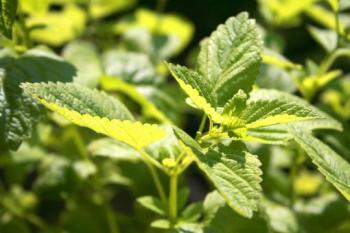The annual herb basil, ocimum basilicum, has its origin in India. Basil is not merely valuable for its marvelous flavor, but aids in alleviating gas and bloating, and helps lactating women. Experience has shown that inflamed breast warts respond well to a gentle wash with basil tea.
When conditions are right, the plant will sprout from seeds, and with sufficient nutrients and moisture, it can develop stems and leaves. The plant is tender and cannot tolerate frost. White blossoms are the plant’s crowning finale. They will develop new seeds, and thus the life cycle repeats itself. In spite of nurturing and good care, the mother plant has finished its cycle and will die.
Do you know of a supermarket that does not carry this plant in the produce section all year round? What happens to all the thousands of basil plants that people buy every day and take home? Most of them don’t even survive to see the following weekend.
It’s the same disappointment each time—the stems turn dark, the leaves wilt, and there might even be mold on top of the soil in the pot. Sitting on the kitchen windowsill for the first few hours the plant looked so appetizing, green, and appealing. How can we assure that this poor fellow survives?
When I spot these poor basil plants in the supermarket, subjected to cold-water sprays from the automatic system, I get the same feelings I experience when visiting a shelter for abandoned or sick animals. I wish I could save them all, so much do I agonize for their lack of care.
When basil arrives at the supermarket it contains everything needed for fast growth—water in its roots, warmth, ideal nutrition, and most of all, the protective plastic “corset.” Then suddenly the plant is deprived of all these, and one wonders why it’s dying.
Next time you buy a potted basil plant, I highly recommend you transplant it into a larger pot, in normal potting soil. The pot does NOT need a drainage hole, just a few pebbles in the bottom will do. Keep the plastic sleeve (corset) the plant came with; the plant needs this support around the stems. Since the plant grows quickly, the stems are unable to develop a sturdy framework right away and need support for a couple of days.
Eventually, the stems will be able to transport water and nutrients to the leaves, and a few leaves may reach above the protective sleeve. They need lots of daylight and ideally, sun, but that’s sometimes impossible during the winter. Never let the surface of the soil dry out. Water regularly with lukewarm water—best gently twice a day, instead of too much all at once.
To begin with, cut off the largest leaves and later on remove all of the top sprouts down to the next leaf juncture. That enables side branches and leaves to develop. Removing the top sprouts as described also prevents the plant from blooming, which, as already mentioned, signals its demise. Perhaps your basil plant will now supply you with aromatic leaves until Easter. Good luck with the harvest!

